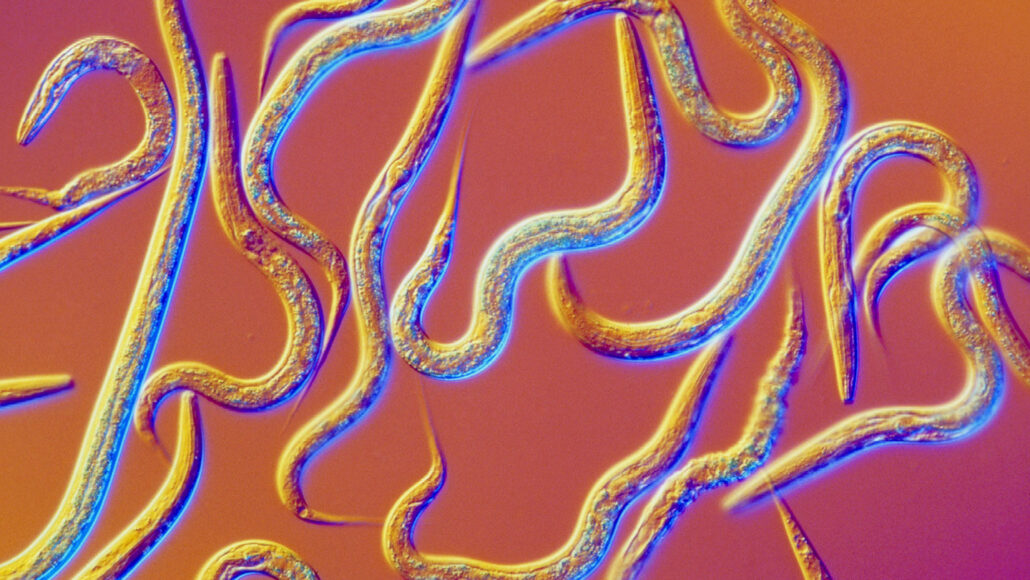Questions for ‘Like bloodhounds, worms are sniffing out human cancers’

This microscopic image shows Caenorhabditis elegans nematodes, small worms being used in a new system to sniff out cancer.
Sinclair Stammers/Science Source
To accompany ‘Like bloodhounds, worms are sniffing out human cancers’
SCIENCE
Before Reading:
- Imagine you close your eyes and enter a room. A super-cheesy fresh-baked pizza lies before you. How likely are you to know what’s in the room, even though you can’t see it? Now imagine you enter another room, eyes still closed. But this room contains a frightened skunk. Again, how likely are you to know what’s in this room? We know that our eyes detect light. But what about our nose? What do you think your nose detects? What do you think smells are made of? What do you think makes the scent of pizza different from that of a skunk?
- What use might a crime scene detective have for a specially-trained police bloodhound? What powerful ability do bloodhounds possess? Think about depictions of bloodhounds, or similar dog breeds, in movies and TV. What are some ways that you’ve seen this ability put to use?
During Reading:
- What kind of worm is Caenorhabditis elegans? About how long is one of these worms?
- Shin Sik Choi and his team created a device that looks like a microscope slide with three wells. To use the device, what gets placed in the middle well? What gets placed at the ends? How many worms get used for each test?
- How does the number of neurons in a human brain compare to those in a single C. elegans?
- What are VOCs? Why are some scientists who study cancer also interested in detecting VOCs?
- Why does Michael Phillips carry out research to analyze human breath?
- While CT scans are good for detecting lung cancer, Bunn says that too many CT scans can bring new problems. What is one such problem?
- Which neuron in C. elegans was Enrico Lanza’s Ph.D. work trying to “pinpoint”? In Lanza’s worms, what change occurs in a neuron that gets activated? Lanza points out that the worm is transparent. Why is that fact significant to him and his research?
After Reading:
- Phillips says that his breath analyzer device, BreathX, is used for cancer screening — not for cancer diagnosis. How does screening someone for cancer differ from diagnosing cancer? If you were a doctor, and you cared about your patients, would you hope that more patients would get screened for cancer or diagnosed with cancer? Imagine you’re a doctor talking to a patient. As a doctor, you know that since this patient smokes, they are at high risk for developing lung cancer. They are fearful of the prospect of getting a cancer screening. What might you say to them to encourage them to get a cancer screening?
- Review the special, genetically-modified neuron technique that Lanza used for pinpointing specific neurons. Imagine you are a scientist who studies jellyfish nervous systems. Devise (and describe) an experiment that would help you figure out which jellyfish neurons might respond to light.